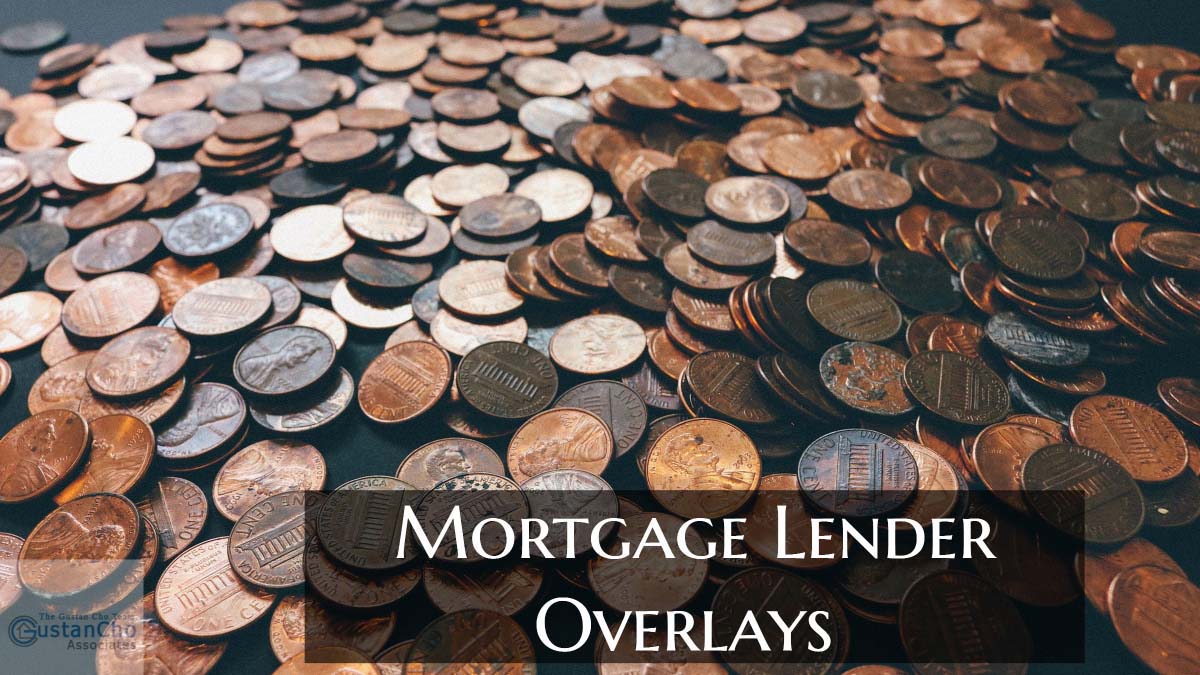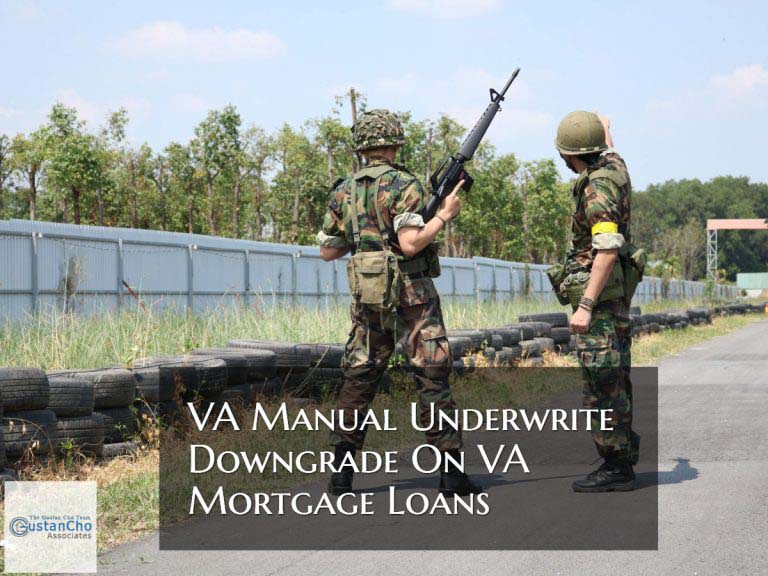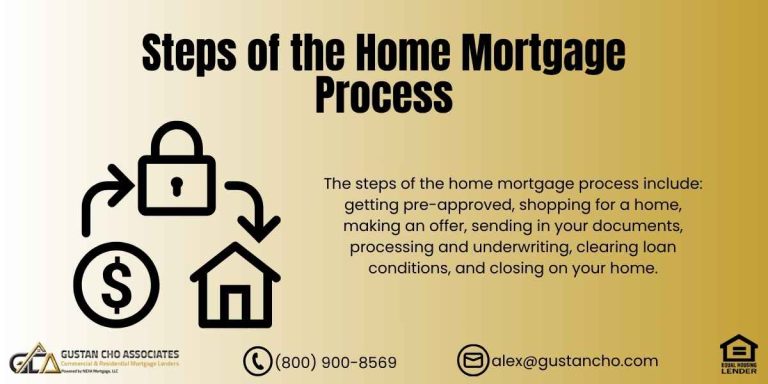This guide covers mortgage lender overlays on FHA and VA loans. Mortgage lender overlays are mortgage lending guidelines above and beyond those mandated by mortgage loan programs. There are two types of mortgage lending guidelines:
- Mortgage Loan Program Guidelines
- Mortgage Lender Overlays
All banks and mortgage companies must follow loan program guidelines. However, every bank and/or lender can have its own overlays. In this article, we will cover and discuss common mortgage lender overlays on FHA and VA loans imposed by lenders.
Mortgage Lender Overlays on FHA and VA Loans vs. Guidelines: What Borrowers Need to Know
When shopping for a mortgage, especially an FHA or VA loan, you often run into the phrase lender overlays. Simply put, a lender adds these extra rules on top of the basic guidelines set by the Federal Housing Administration or the Department of Veterans Affairs. Knowing how these overlays stack up against official rules can make your home-loan journey smoother. This guide breaks down what overlays are, how they differ from FHA and VA standards, and what they mean for you as a borrower.
Agency Guidelines vs. Mortgage Lender Overlays on FHA and VA Loans
FHA and VA loans were created to help more people buy homes, such as first-time buyers, modest-income families, and military veterans. Each program spells out clear requirements for who can borrow, what credit scores work, how much debt a borrower can carry, and more.
Turned Down for an FHA or VA Loan? It Might Be Lender Overlays
Many lenders add extra rules on top of FHA and VA guidelines—we don’t.
Mortgage Lender Overlays on FHA and VA Loans: HUD Agency Guidelnes
FHA loans, backed by the Federal Housing Administration, remain a favorite thanks to forgiving standards:
- Minimum Credit Score: 580 for a 3.5 percent down payment.
- 500 to 579 for a 10 percent down payment.
HUD Agency Guidelines vs. Mortgage Lender Overlays on FHA and VA Loans
FHA loans are backed by HUD and are designed for buyers with average to low incomes:
- Minimum Credit Score: It is generally set at 580 for the 3.5% down option or 500 with a 10% down option.
- Down Payment: As low as 3.5% when the score is 580 or better; 10% if lower.
- Debt-to-Income Ratio: Usually capped at 46.9% front-end and 56.9% back-end on AUS-approved files.
Manual underwriting is as follows:
- 31% front-end and 37% back-end with no compensating factors.
- 37% front-end and 47% back-end with one compensating factor.
- 40% front-end and 50% back-end with two compensating factors.
- Loan Limits: Set by county, from $524,225 in standard areas to $1,209,750 in high-cost areas for 2025.
- Mortgage Insurance: Upfront and ongoing MIP are mandatory for the life of the loan.
- Property Requirements: Homes must pass HUD’s basic safety and livability checks.
VA Agency Guidelines on VA Loans
VA loans, guaranteed by the Department of Veterans Affairs, cater to eligible veterans, active-duty service members, and certain surviving spouses:
- Minimum Credit Score: No official floor exists, yet most lenders like to see a 620 or above.
- Down Payment: Usually, none is needed.
- Debt-to-Income Ratio: Commonly set at 41%, but higher is allowed if leftover income is strong.
- Loan Limits: As of 2025, first-time users have no cap, though local ceilings still guide later buyers.
- Funding Fee: It ranges between 1.4% and 3.6% of the loan, depending on the service record and the down payment size.
- Property Requirements: Homes must clear VA’s Minimum Property Requirements (MPRs), which guard safety and structural soundness.
While FHA and VA rules set a basic approval path, many lenders add extra hoops, called overlays, to make the ride bumpier.
What Are Lender Overlays?
Overlays are the additional boxes a mortgage company asks you to check on top of the main FHA or VA checklist. Those national programs spell out minimum credit and income standards so the loans can be insured or backed, but each lender keeps its safety net by asking for tougher proofs. Because every shop sets its rules, overlays can touch things like credit scores, debt-to-income (DTI) limits, job stability, and asset sizes.
Why Do Lenders Use Overlays?
Lenders lean on these extra standards for a few key reasons:
- Risk Mitigation: Stricter rules reduce the number of default loans, shielding the lender’s money.
- That makes sense.
- Protect the bank, and the bank can keep lending.
- Investor Requirements: When lenders eventually sell your loan to the secondary market.
- Fannie Mae and Freddie Mac, those giants, may demand cleaner files than the original program asked.
- Operational Preferences: Some companies use one blanket checklist that covers every product, including federally backed loans, to avoid training staff on dozens of rule books.
- Market Conditions: When rates swing or housing cools, lenders tighten their overlays quickly, hoping to avoid borrowers with shaky profiles until things stabilize.
- Take the FHA badge that lets folks with a 500 score slip in with 10% down.
- A lender with a 640 line on credit would stamp your file denied due to their overlays, even though you met the overall program test.
Common Mortgage Lender Overlays on FHA and VA Loans
Every lender has rules in addition to general guidelines, which are known as overlays. Here are some frequent overlays borrowers encounter with FHA and VA loans.
Credit Score Requirements
- FHA: Although FHA loans can start at a 500 score, most lenders still raise that floor to 620 or even 640.
- Certain programs may push the cutoff to 700 or higher.
- VA: The VA itself doesn’t set a score limit, yet many lenders expect at least 620 to 660, and the premium shops often target scores over 700.
Debt-to-Income Ratios
- FHA: FHA lets DTI reach 46.9% front-end and 56.9% back-end on AUS-approved files.
- VA: While VA is usually flexible past 41 percent if residual income looks good, some lenders stick strictly to that 41 percent ceiling.
- Employment History: For both programs, two years on the job is the basic rule, yet lenders may want that time spent in the same line of work or ask for extra paperwork from self-employed applicants.
- Reserves and Savings: FHA: No formal reserve count exists, but many lenders still want to see at least one or two months’ mortgage payments in an account.
- Residual Income and Cash Reserves: Residual income matters for VA loans, yet some lenders still ask for a small cushion- usually three months of the total bill- to play it safe.
- Property Type Restrictions: Overlays sometimes pull in extra rules about the home itself.
- For instance, FHA or VA financing may be limited to only standard single-family houses or may leave out certain condos that fail specific guidelines.
- Loan-to-Value (LTV) Ratios : High LTV ratios are baked into FHA and VA programs—96.5 percent for FHA and 100 percent for VA—but some lenders still limit them to 95 percent or demand a larger down payment.
- Manual underwriting: Both programs let a loan officer step in through manual underwriting when the automated path doesn’t pan out.
- Still, many lenders shy away from that extra work, leaving some non-traditional borrowers in the cold.
- How Overlays Impact Borrowers: Lender overlays can shape the mortgage journey in big ways, handing out headaches and hidden perks.
Challenges:
- Reduced Accessibility: People who slide under the official FHA or VA roof but flop an overlay can be turned away, shrinking their home-buying options.
- Higher Costs: Tougher demands like larger down payments or higher credit floors lift upfront bills or postpone approval until credit rebounds.
- Confusion: Many borrowers think they only need to meet FHA or VA rules, but extra lender-specified guidelines, known as overlays, can still trip them up and lead to surprise denials.
Opportunities
- Shopping Around: Because each lender creates its own set of overlays, comparing offers lets borrowers find one with fewer extra requirements.
- Negotiation: Strong candidates, such as those with high income or sizable savings, may persuade a lender to waive or ease some of the toughest overlays.
- Better Terms: Institutions that impose stricter overlays often offset the risk by offering lower interest rates or reduced fees to borrowers they consider less likely to default.
- How to Navigate Lender Overlays: Despite tougher lender rules, hitting an FHA or VA loan goal requires prep work and careful follow-through.
Here are the most effective steps.
Research Lenders
Scan online reviews and use loan comparison sites to spot lenders known for light or no overlays. Smaller banks, local credit unions, and independent mortgage brokers usually offer more flexible standards than big national firms. When you call each lender, ask point-blank what credit scores, DTI ceilings, and other overlays they impose on FHA or VA purchases.
Denied a Mortgage? Don’t Blame FHA or VA
You may still qualify—just not with your current lender. We approve loans others turn away.
Improve Your Financial Profile
- Boost Credit Scores: Pay down high balances, stay on time, and fix any errors to raise your three-digit scores steadily.
- Lower DTI: Reduce payments on revolving debt or add extra income to shrink your debt-to-income ratio before applying.
- Save More: Build several months’ cash reserves to satisfy a lender that still asks for proof beyond the VA or FHA minimum.
Work with a Mortgage Broker
An experienced mortgage broker knows which lenders will look at your file, and how you need them to. Instead of calling a dozen banks, the broker does the legwork, saving you time and frustration.
Understand Manual Underwriting
Ask about manual underwriting if your application gets stuck in the automated black box. FHA and VA loans still let a real person review your file, so borrowers with short credit histories or other quirks can sometimes get approved.
Get Pre-Approved
Talk to three to five lenders and get written pre-approvals from each one. This will show you their exact rules and let you lock in the lowest rate before rates change.
FHA and VA Loans vs. Conventional Loans: The Role of Mortgage Lender Overlays
Overlays are extra lender rules that supplement the basic program guidelines, and they are very important when choosing a loan.
FHA and VA Loans
These programs start with relaxed standards, but many lenders add tougher overlays. The loans work well for borrowers with lower credit or only a small down payment.
Conventional Loans
The baseline for these starts higher, at a 620 credit score and a 3 to 20 percent down payment. Some lenders impose fewer extra rules once a borrower reaches that hurdle since they adhere closely to Fannie Mae or Freddie Mac guidance. Overall, your best path is to compare offers and pick the one that fits your budget and goals. Lender extras on FHA and VA loans can trip borrowers up, but they aren’t impossible to clear. When people know the official FHA or VA rules from the lenders’ twist on them, they can shop smart, boost their finances, and choose loans that match tougher standards. A well-informed loan officer or mortgage broker also makes a big difference by guiding clients through those extras and hunting for the best terms. For tailored help, talk with several lenders so you can compare their overlays and choose the mortgage that best fits your homeownership dream.
Government And Conventional Mortgage Programs
Here are the mortgage loan programs:
- FHA Loans
- VA Loans
- USDA Loans
- Fannie Mae
- Freddie Mac
The above mortgage loan programs have their minimum guidelines. However, lenders can have mortgage guidelines that are above and beyond those of the minimum loan program guidelines, called overlays.
Mandatory guidelines include the following:
- Minimum credit scores
Waiting periods after the following:
- bankruptcy
- Foreclosures
- Short sales
- Deed instead of Foreclosure
Debt-to-income ratio caps:
- Down payment requirements
- Collection account guidelines
- Judgment guidelines
- Other mortgage loan guidelines
Approve/Eligible Per AUS Versus Mortgage Overlays
Just because mortgage borrowers get a Fannie Mae Automated Underwriting System approval does not mean a particular lender will approve a mortgage loan application. Many lenders will implement additional mortgage underwriting standards that surpass the bare minimum FHA and Fannie Mae Guidelines. This is called lender overlays. For example, a borrower can have an approved/eligible per DU Findings, which has been automated underwritten by Fannie Mae’s Automated Underwriting System.
Say that the mortgage loan applicant has a mid-FICO score of 620 and a debt-to-income ratio of 53%. The particular mortgage company might have mortgage lender overlays, where the borrower might not qualify because of their overlays.
That lender can be an overlay lender on credit scores and can require a higher score, like a 640 credit score. They might cap their debt-to-income ratios to 45% on credit scores under 680 FICO, even though HUD’s credit score guidelines are 580.
Lender Overlays Explained—and How to Avoid Them
We follow agency guidelines only, with no extra credit score or DTI restrictions.
Typical Mortgage Lender Overlays
Before reading any further on overlays, there are mortgage companies with no Mortgage Lender Overlays on FHA and VA loans that I will cover in a later paragraph. Gustan Cho Associates has no Mortgage Lender Overlays on FHA and VA Loans. We are mortgage brokers and correspondent lenders licensed in multiple states with zero Mortgage Lender Overlays on FHA and VA loans, as well as USDA and Conventional loans. However, I will cover overlays and what to do if you choose a mortgage banker with lender overlays.
Typical Lender Overlays By Lenders Versus Mortgage Lender Overlays On FHA And VA Loans
Typical Mortgage Lender Overlays On FHA And VA Loans are the following:
- Credit scores on FHA loans: Fannie Mae Automated Underwriting System might approve FHA borrowers with a 580 credit score on an FHA loan with a 3.5% down payment.
- However, the mortgage company may require a minimum of 640 FICO, even though the HUD guidelines on credit scores only require a 580 credit score.
- Debt-to-Income Ratios: The Fannie Mae Automated Underwriting System might approve a mortgage loan applicant with a 55% back-end debt-to-income ratio.
- However, a mortgage company may have its mortgage lender overlays where they cap the debt-to-income ratios at 45% even though HUD guidelines on DTI are capped at 46.9% front-end and 56.9% back-end DTI to get an approved/eligible per AUS.
- Verification of rent: Fannie Mae Automated Underwriting System might approve a mortgage borrower per DU Findings without conditioning verification of rent.
- However, the mortgage company might have its mortgage lender overlays requiring verification of rent.
- Paying off past charge-offs and collection accounts: FHA and VA guidelines do not require the payment of old collection accounts to qualify for VA and/or FHA loans.
Individual Lender Overlays Versus Agency Guidelines
However, the lender might have overlays requiring borrowers to pay off old collection accounts with balances, even though the Automated Underwriting System does not require borrowers to.
- Credit tradelines: Fannie Mae Automated Underwriting System might approve per DU Findings without any credit tradelines
- However, lenders might have their internal overlays requiring three or more credit tradelines seasoned for 12 to 24 months
- Some overlays require 24 months of seasoning of credit tradelines with no late payments as part of their overlays
- VA loans do not require any minimum credit score requirements
- However, to get approved/eligible per AUS FINDINGS, most veteran borrowers will need a 580 credit score
VA does not have any debt-to-income ratio requirements.
Lenders’ Overlays During And After Chapter 13 Bankruptcy
Most lenders have overlays on FHA and VA Loans during and after Chapter 13 Bankruptcy. However, under both FHA and VA guidelines, borrowers can qualify for FHA and VA Loans one year into their Chapter 13 Bankruptcy Repayment Plan with Trustee Approval. There is no waiting period to qualify for FHA and VA Loans after the Chapter 13 Bankruptcy discharge date. Gustan Cho Associates has no mortgage lender overlays on FHA and VA loans during and after a Chapter 13 Bankruptcy discharge date.
Qualifying With A Lender With No Mortgage Lender Overlays On FHA And VA Loans
Borrowers with higher debt-to-income ratios or less than perfect credit must qualify for a mortgage loan with a lender that has no overlays. Please contact us at Gustan Cho Associates at 800-900-8569 or text us for a faster response. Or email us at gcho@gustancho.com. We are available 7 days a week, evenings, weekends, and holidays. The good news is that we help our borrowers get loan approval per DU Findings with no overlays. Borrowers with credit scores under 600 FICO who get an approved/ eligible and can meet the conditions stated on AUS will close on their FHA or VA Loans.
Get Approved for FHA or VA Loans—Even With Lower Scores
If a lender added stricter rules, we can help you qualify with true FHA and VA guidelines.











